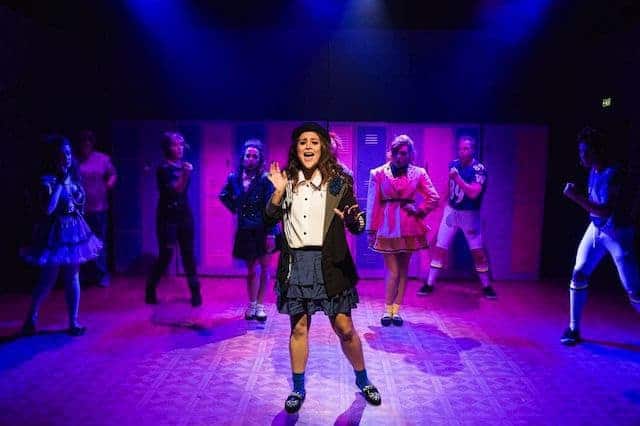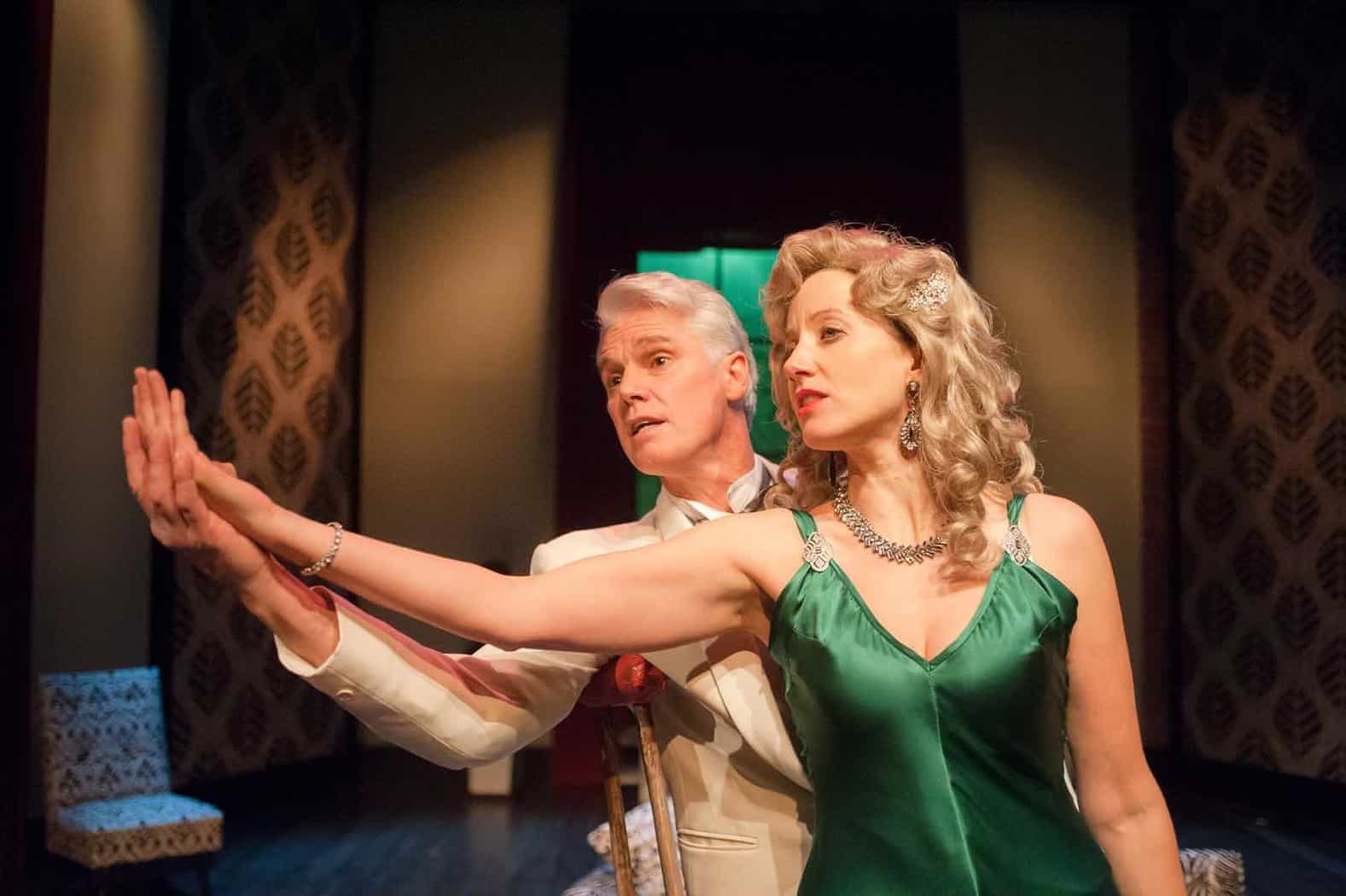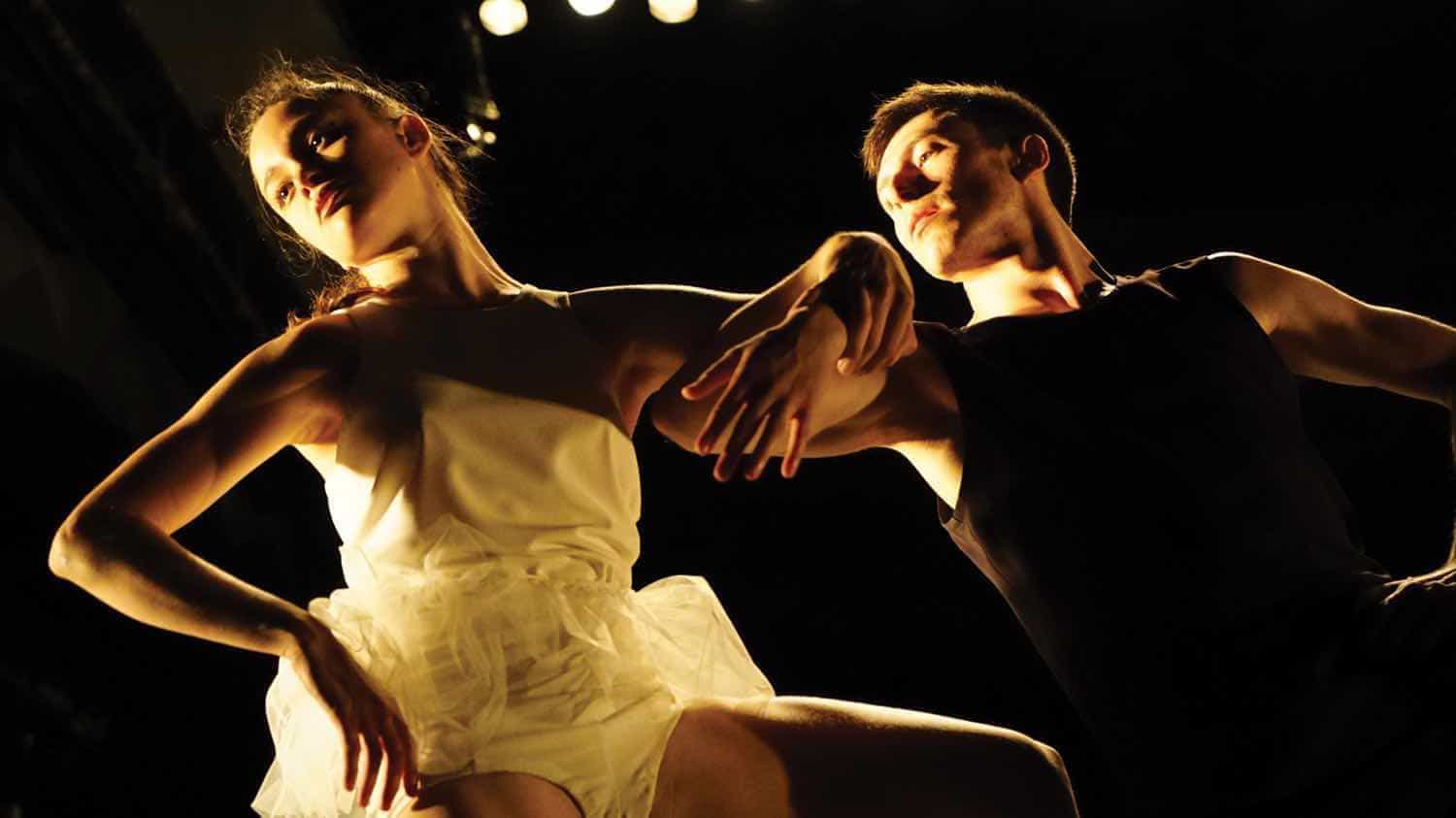Heathers: The Musical features a great score and talented cast but the flashy direction falters, making it too often vapid.

“Freak, slut, loser, short bus,” sing the majority of teens in the opening number of Heathers: The Musical, a sharp dark comedy about the effects of teen bullying, suicide, and violence — set to a rock-pop score.
Based on Michael Lehmann’s 1988 film, Heathers: The Musical follows teenager Veronica Sawyer who joins the most popular and feared girl-clique at school: the “Heathers”. Dissatisfied with their selfishness and bullying, Veronica — influenced by the new (and slightly psychotic) boy at school, J.D. — becomes involved in a chain of homicides, which has her questioning the moral line between right and wrong.
While faithful to its source material, Heathers: The Musical lightens up the darkness of the film – soaking it with bright coloured costumes, enhanced hair and make-up, and a fun upbeat score which contributes to the show’s contagious, sassy energy. Laurence O’Keefe and Kevin Murphy — the team behind Legally Blonde: The Musical — craft a catchy, brassy rock score with bubbly melodies and clever lyrics.
From its snappy number delivered by all three Heathers in “Candy Store”, to Veronica’s belted anthem in “Dead Girl Walking”, O’Keefe and Murphy’s music is an important driver of Veronica’s identity crisis: she oscillates between seeking vengeance and morality.

The book makes the bold choice to deflate its men into chauvinistic stereotypes to focus on creating three-dimensional female characters. The decision to emphasise women as the main subjects is a commendable concept, but it backfires in “Blue”. The song relies on date-rape comedy to reinforce the extreme sexism of the “dumb” boy jocks.
Although Veronica is more complex, the show still borders on the dangers of presenting its characters as mere caricatures: the bitchy popular girls, the dumb jocks, the nerdy unpopular girl. And where the book falters, Trevor Ashley’s accompanying direction ignores any needed biting commentary to criticize this teenage society. He becomes a victim of the high school culture that the book tries to satirise.
The production frequently suffers from prioritizing comedy and entertainment over all else, leading to a shallow treatment of sensitive issues. Trevor Ashley’s direction is by no means subtle. In his extravagance, Ashley brushes aside key questions of morality which arise from the murdered popular kids.“Dead Gay Son” is an overt example of this failure to address the ambiguity between ethics and justice, where the playful dropdown of rainbow flags and celebration of homosexual relationships completely overshadows the consequences of J.D and Veronica’s involvement in the murders.
It’s a shame, because there are moments that suggest Ashley is capable of wringing out more meaning from the text than his flamboyant show allows. In a scene that reveals the dangers of J.D’s sociopathic tendencies, Ashley orchestrates a rapid lighting change that causes J.D.’s shadow to loom over Veronica’s figure in “Seventeen”. But by the middle of the second act, it becomes clear that Ashley relies on the show’s droll irony and black comedy, ignoring the nasty grittiness that makes the musical’s predecessor so iconic.
Yet the few small-scale songs, like Martha’s “Kindergarten Boyfriend” and Heather McNamara’s “Lifeboat”, are poignant — a testament to the nature of the numbers and the cast’s touching portrayals of their characters. Stripping away the heavy choreography, the characters can vocalize their inner thoughts and emotions about the destructive effects of bullying.
Hillary Cole, easily one of the highlights of the show, impresses as the angsty, conflicted Veronica. Her vocal range allows her to hit emotional beatss in “Seventeen” and powerfully belt out “Dead Girl Walking”, a celebration of Veronica’s spiritedness.
The production design is exemplary. The Hayes Production’s transfer to the larger stage of the Playhouse Theatre retains the multi-functional main set piece of the lockers, which transform into beds, coffins, and 7-Eleven shelves. The set’s flexibility allows for animated movement and blocking, enabling the actors to minimise and enlarge the space on stage.
Heathers: The Musical elevates itself through strong cast performances and an infectious score. B ut its substandard direction fails to address the narrative’s gravitas in the right light. The production is just as “damaged” as its main characters.

